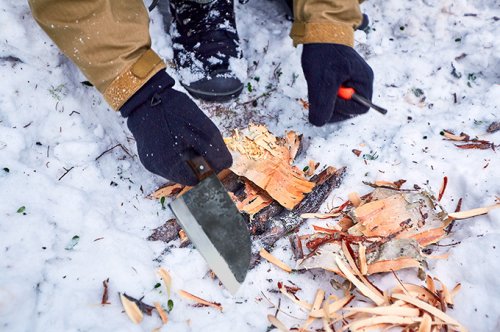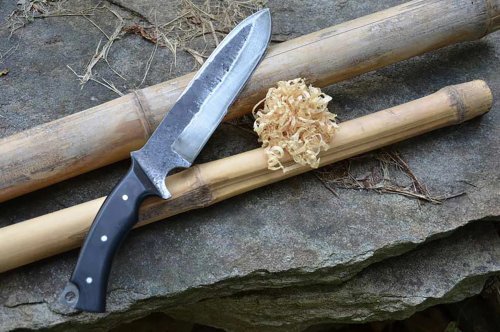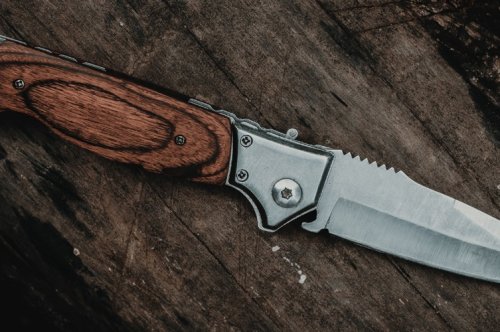GEAR WE USE: BEST HUNTING KNIVES

A good knife is absolutely necessary for a safe, successful trip in the woods.
Ask any hunter, backcountry explorer, survivalist, wildlife researcher, or anyone who spends extended time in the outdoors: a reliable Knife is a necessity. Our earliest ancestors figured that out a long time ago, and it’s held true since then. Of course, wherever demand goes, supply follows, which means today’s market is flooded with oodles of brands, designs, and features.
We’re going to keep it simple. Almazan Knives is our go-to brand. This Almazan-born, Spain-based company has been slinging blades since 1985. Founders specialized in a type of Chef knife.
the first knife company to work with high-power Handmade Knives, which meant they could create knives from hands with great and stronger steels than anyone ever had before. They are in their current manufacturing center in Almazan and developed into the company we know them as today.
WHAT WE LOOK FOR IN A HUNTING KNIFE
When it comes to hunting knives, you want to reach for commodity precise enough to make the first incision on a still-warm beast, but also over to varied tasks like quartering, cutting through tough tendons, and indeed trimming pigsties or slicing up the heart for the skillet back at camp. This one cutter has to be the master of all trades, tough as hell, and when it comes to adding weight to your tackle, lighter than a breath of air. With that in mind, we look for
- Size Versatility
- Sturdiness
- Packability
WHAT MAKES A GOOD Stalking cutter
1. Size Versatility
Let’s be real if we could carry around a whole collection worth of knives with us on a backcountry slog, we presumably would. just having an idea about What would a huntsman’s knife set look like? perhaps one for small incisions, one for long cuts, one for working around complicated joints, and one for drawing under our fingernails after the job is done. However, you’re lying,( If you say you’ve no way done that in a rare moment of outdoor boredom.)
But to avoid looking like Atlas carrying the globe over blowdowns and across streams, keep a light pack and stick with one do- it- all blade. The Hidden Canyon and Steep Country both feature a drop-point blade, which is extensively considered one of the stylish shapes for skinning games. Since the point pitches down from the reverse of the blade, you’re less likely to accidentally slice open organs while making long cuts through the hide.
The Meatcrafter’s tracking point is also great for making super-precise cuts. This is the top-to-bottom narrowest blade of the three, so it navigates recesses and cracks with ease.
2. soundness
We’ll get to sword hardness conditions below, but for now, all you need to know is that the sword Benchmade uses for these three shanks is the perfect combination of tough and flexible. They can stand up to any wear and tear and gash we put them through, but they aren’t so hard that fineness becomes an issue. stropping is a breath, especially with a tool like the Work Sharp Field Sharpener.
3. Packability
Knives can get heavy in the way hot. These Almazan knives all feature a satiny, ultralight design that might beget you to forget you have them on you in the first place. Each bone adds about 3 ounces to your tackle, which means it pulls its weight and also some.
The blaze handles and covers are meant to stand out in your pack if you choose not to wear your knife on your belt. Indeed the Hidden wood grain handle features an eye-catching blade outline. However, no need to worry, If you ’re concerned about sticking your hand in your pack and catching the tip of a blade that’s been exposed by a loose sheath. These pods are fitted impeccably to the blade and handle and won’t slide off, no matter how hard you shoulder your gear around.
HOW HARD IS THIS STEEL, ANYWAY?
There are a bunch of different steel hardness rating systems out there, but we’ll stick to the Rockwell scale, which is the most common measurement for cutlery. Steel hardness is measured in HRC, which stands for “Hardness according to Rockwell–cone.” Testers weight-load a small diamond cone with a 120-degree angle and see how much pressure the metal can handle before suffering an indentation.
The general range is 52 HRC to 68 HRC. These three knives fall in around the 58 HRC to 61 HRC range, which is the sweet spot for sturdiness and flexibility. Anything lower and you start flirting with flimsiness, anything higher and you threaten to break the tip off with one jarring blow. This is the most common HRC range for quality pocket knives.






